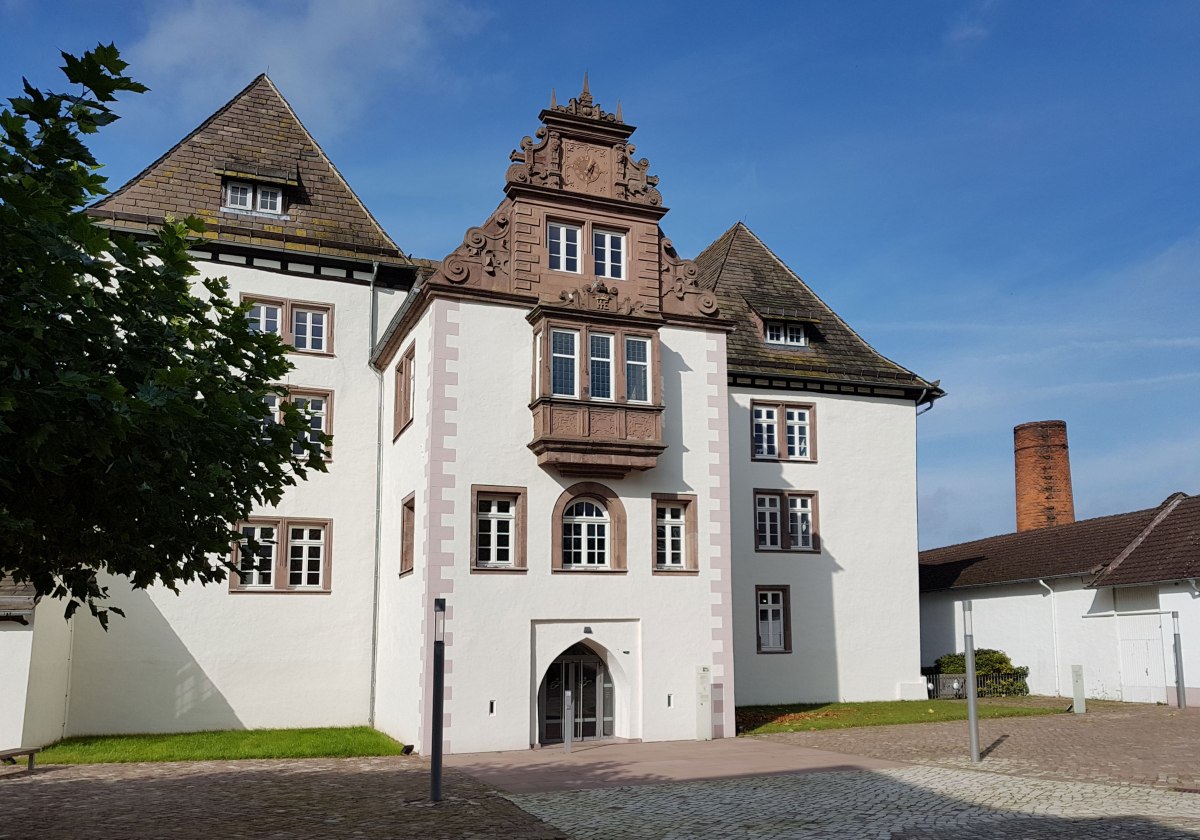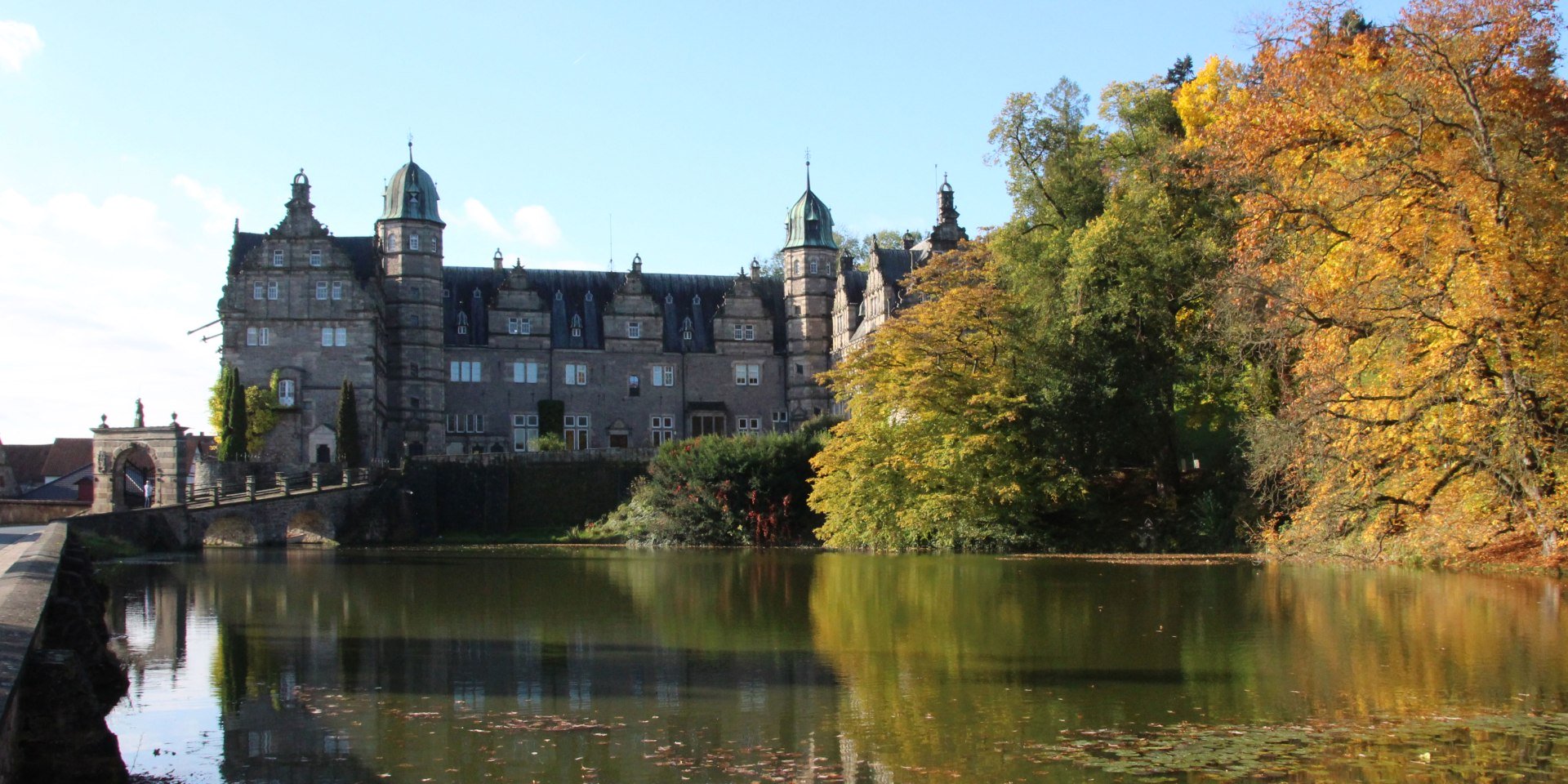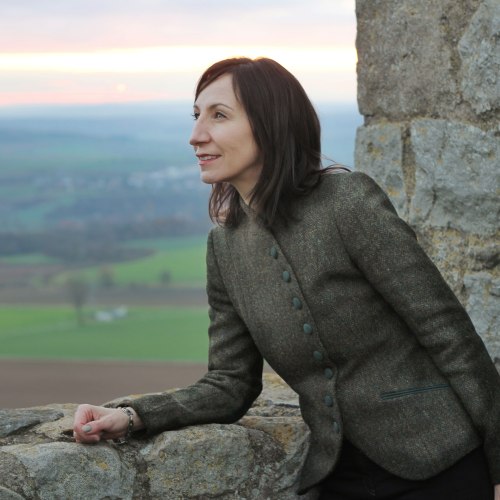The Weser Uplands is not only a popular destination for cyclists and hikers but also for history enthusiasts. The area around Hamelin is densely populated with impressive castles and mighty fortresses. Visit the Weser Uplands to discover the most beautiful castles and most prominent noble families in Germany. The variety of historical manors is impressive, with castles and fortresses located along a 60 km route.
Why are there so many castles and fortresses in the Weser Uplands?
As the name implies, the Weser Uplands are hilly and situated on the Weser river. Long ago, hills offered natural protection against attackers. It was easy to survey the surroundings from above and the hills meant that it was difficult to access the castle. That is why there are significantly more castles in hilly regions than in flat areas. And the Weser river was a popular trade route. Trade brought great wealth to the people along the Weser river; old castles and manor houses were converted into magnificent palaces. Trade was particularly good in the 15th century, during the Renaissance, which is why an incredible number of castles were built and refurbished during this time. And that explains the abundance of castles in the Weser Renaissance style. Luckily for us, we can continue to enjoy those magnificent buildings today.
Bückeburg Palace
There is a reason why Bückeburg Palace is one of the loveliest and most visited castles in Niedersachsen (Lower Saxony). Both the castle and the expansive grounds are incredibly picturesque. Bückeburg Palace is the ancestral seat of the Princely House of Schaumburg-Lippe. It has been family owned for 700 years and Alexander, Prince of Schaumburg-Lippe, and his family still live there. However, only one wing of the castle is privately owned and a large part of the premises is accessible to visitors.
The palace ensemble that we know and love today was built during the Renaissance on the site of an old castle. The wings of today’s castle date back to that time. However, the middle part of the building burned down in the 18th century and was rebuilt in the Baroque style.
When visiting Bückeburg Palace, you should definitely take in a demonstration put on by the riding school. Bückeburg is home to Germany’s only riding school. And the princely family mausoleum within the palace grounds is unique and worth a visit. It is the world’s largest royal crypt and the ceiling of the mausoleum features the largest gold mosaic dome in Europe.
Bückeburg Palace has also been immortalised in literature. It is said that in his novel Candide, French writer and philosopher Voltaire (1694-1778) used Bückeburg Palace as the basis for Candide’s father’s castle, describing it in great detail.

Schaumburg Castle
Schaumburg Castle is located just a few kilometres south of Bückeburg Palace. As one might guess by the name, Schaumburg Castle is also part of the House of Schaumburg-Lippe: it is the ancestral seat of the House of Schaumburg, when the Schaumburgs were still counts and princes.
The location of the castle is especially picturesque, perched on the hill, directly above the Weser river. The castle was first built in the 13th century but was repeatedly added to and renovated in subsequent centuries, resulting in a property of various epochs. In the 15th century, Schaumburg Castle was allegedly the centre of the witch hunts in the Weser Uplands. Many gruesome events took place here and the blood lime tree in the courtyard is a present day reminder of that.

Hämelschenburg Palace in Emmerthal
Even though Hämelschenburg contains the word ‘burg’ (fortress), it is actually an impressive Renaissance palace built in the Weser Renaissance style. The building is so ornately decorated that it is among the most beautiful Renaissance palaces in Germany.
The palace was built in the middle of the 16th century by the Klencke family, who still own it and live in it today. One part of the palace is open to visitors and the interior is definitely worth seeing.
Hämelschenburg Palace is on the German Fairy Tale Route which focuses on the fairy tales and legends written by the Brothers Grimm. Each town along the Fairy Tale Route is linked to a fairy tale written by the Brothers Grimm. Hämelschenburg Palace, however, is firmly grounded in the real world: today’s palace was commissioned by Jürgen von Klencke and his wife, Anna von Holle. Anna von Klencke, née von Holle (1567-1630) was highly educated with a very Christian upbringing. She is said to have been a benefactress and it is thus plausible that the character of Mother Holle in the eponymous fairy tale (also known as ‘Old Mother Frost’) was actually based on her.

Pyrmont Castle in Bad Pyrmont
Not far from Hämelschenburg Palace in the resort town of Bad Pyrmont is yet another impressive castle. Pyrmont Castle is the summer residence of the Count of Waldeck, latterly the princely House of Waldeck and Pyrmont. The Baroque castle was built in the 18th century but is integrated into a fortress dating back to the 16th century. The noble family of Waldeck actually comes from North Hesse. The family’s main castle is in Bad Arolsen. As the principality of Waldeck stretched into the southern corner of Niedersachsen (Lower Saxony), a summer castle was constructed in the popular, traditional resort town.
Although the principality of Waldeck and Pyrmont is an extremely small principality, the daughters married into Europe’s largest royal families. Emma became the Queen of The Netherlands, Helene married the son of Queen Victoria and Prince Albert and Marie married the man who became King of Württemberg.
Today, Pyrmont Castle houses a museum featuring exhibits about the history of the city and the castle as well as very interesting temporary exhibitions.
Münchhausen Castle and museum in Bodenwerder
Baron Münchhausen is not a fictional character from a book or film. The famous ‘Baron of Lies’ really existed and he was from Bodenwerder an der Weser in southern Niedersachsen (Lower Saxony). Münchhausen Fortress, where Hieronymus Freiherr von Münchhausen was born and raised, is far from a magnificent building. It is a half-timbered farmhouse that today houses the town hall. Adjacent to it is the Münchhausen Museum, dedicated to the life and legend of the ‘Baron of Lies’.
Münchhausen Castle Hotel in Aerzen
Münchhausen Castle is not to be confused with Münchhausen Fortress, even though they are located in very close proximity to each other. The builder of Münchhausen Castle comes from the same noble family as the Baron of Lies but lived much earlier. Münchhausen Castle was built in the middle of the 16th century by Hilmar von Münchhausen, one of the richest men in Germany at the time. One can tell just by looking at the castle – it is spectacular and magnificent. Today, Münchhausen Castle is home to a luxurious castle hotel.

Fürstenberg Castle and porcelain factory
Fürstenberg Castle is one of the smaller castles in the Weser Uplands. It is well-known and worth a visit, predominantly because of the Fürstenberger porcelain factory. The famous porcelain factory is located right next to the castle and was built by Prince Karl I of Brunswick-Wolfenbüttel as a prestigious project. In the Baroque period, it was considered incredibly fashionable to produce your own porcelain and many noble houses competed for the first and finest porcelain manufacture.
There has been a fortress in Fürstenberg as far back as the 13th century. It, too, was refurbished in Weser Renaissance style during the Renaissance to create the castle that stands today.
Fürstenberg Castle was used by the Brunswick-Wolfenbüttel family as a hunting lodge, but only temporarily. One can, however, assume that at the height of the Baroque and Rococo period, many noble guests stayed here. After all, Prince Karl I of Brunswick-Wolfenbüttel was married to the sister of Frederick the Great, while the Prussian King was married to the sister of Karl I.
Today, Fürstenberg Castle is home to a porcelain museum that is well worth the visit. If you visited the museum several years ago and haven’t exactly been pining to return, it is certainly worth another visit: a few years ago, the museum was renovated and the exhibition was completely revamped. Today there are only a few select and very special pieces on display but they give a fascinating insight into the world of porcelain manufacture.

Castle ruins of Polle
To finish off I would like to show you one more romantic castle ruin, which lies directly on the Weser river and on the Fairy Tale Route. The castle ruins of Polle are linked to the story of Cinderella. Whether or not the fortress actually had anything to do with the tale of Cinderella has not been proven.
The castle is believed to have been built around the year 1200. Polle Castle belonged to a number of influential families: its ownership went back and forth between a secondary line of the Staufen family and the Royal House of Hanover. The castle was destroyed during the Thirty Years’ War and remained a ruin.




